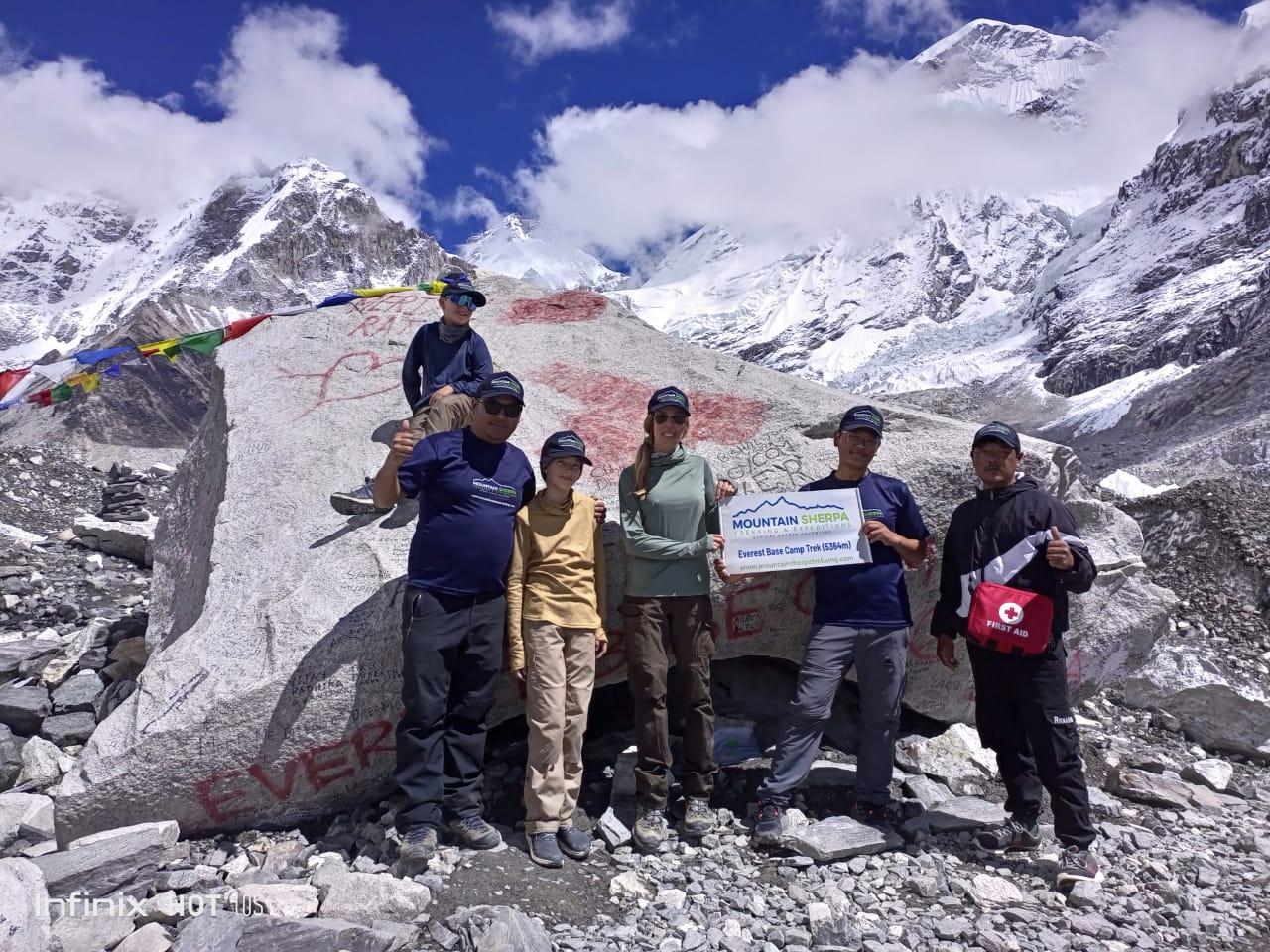How Sherpas Help You Conquer the Annapurna Base Camp Trek
One of the most famous and incredible hiking adventures in the world, the Annapurna Base Camp trek offers majestic views of many Himalayan peaks, lush valleys and rich cultural experiences. But trekking in such rugged terrain and at high altitudes can be a daunting challenge for many. This is where the Sherpas come into the picture. Sherpas are natives with decades of expertise in scaling the Himalayas, and have the potential to turn your complete Annapurna Base Camp trek around.
Sherpas are also talented guides who have intimate knowledge of the routes. These guides have an extensive knowledge of the Annapurna region, from terrain and weather to safe trekking practices. Their experience is invaluable for navigating the diverse and at times perilous terrain of the trek, which features steep climbs, rocky trails and high-altitude conditions. With Sherpas guiding you, worlds away from getting lost and knowing you have this experience in hands.
Sherpas’ most important contribution is keeping trekkers safe, especially when it comes to managing altitude sickness. The higher you climb, the less oxygen present and altitude sickness becomes a real threat. Sherpas are trained to spot the symptoms early and able to step in on the spot, keeping trekkers healthy. They also tailor the pace and timing of trekking to allow for adequate acclimatizing, so that trekkers don’t overextend themselves too soon.
Aside from their skills in terms of navigation and safety, Sherpas are irreplaceable in fostering a sense of companionship and support along the trek. Annapurna Base Camp Trekking is really strenuous physically and mentally, but Sherpas makes it fun. They provide emotional support, share stories about the culture and history of the region and cultivate a sense of community among trekkers. Their sunny disposition and excellent hospitality make the trek more enjoyable, turning it into a communal experience.
Sherpas carry heavy loads to support climbing without the trekker having to funky with a heavy backpack, walking slower than his usual pace. They manage logistical details, such as organizing lodging and meals at teahouses along the way, to make sure everything goes smoothly. They are dedicated to offer a personal experience that contributes to the pleasure of the trek and makes trekkers feel catered for from beginning to end.
However, Sherpas are much more than just guides, they are the pulse of an Annapurna Base Camp trek. Their experience, knowledge and kindness make your hike not just safe but also enriching. Sherpas have made the journey easier in every way possible, whether it be the harsh ground they have to ascend and descend from or altitude sickness or cultural insights. Sherpas can take you to Annapurna Base Camp Trekking is more than a physical accomplishment—it’s about connecting with the mountains, with people, and within yourself.
A Guide to Annapurna Base Camp Trek
Overview of Annapurna Base Camp Trekking The Annapurna Base Camp trek is one of the most famous treks in Nepal, which allows trekkers to witness the magnificent grandeur of the Himalayas. The trek is located within the Annapurna Conservation Area and offers diverse landscapes ranging from subtropical forest to alpine meadows before arriving at the base camp with exquisite views of towering peaks including Annapurna I, Machapuchare and Dhaulagiri. The journey — which can take 7-12 days to complete, depending on your route and how fast you walk — draws adventurers from all over the world. This trek is particularly special for the combination of environments trekkers will encounter, the interaction with local communities and the stunning mountain views. Trekkers will also pass through small, traditional villages, Buddhist monasteries and terraced fields on the way – adding plenty of cultural value to the trip. The Annapurna Base Camp trek is a moderate to more strenuous hike, but one that can be accomplished by fit travelers regardless of experience when supported by well-trained Sherpa guides.
Sherpas: Unsung Heroes of Your Trekking Adventure
Sherpas are the soul of every trek to Annapurna Base Camp providing safety, culture and experience. Familiar with the terrain, weather and local customs, they are invaluable companions along the way. Sherpas are trained and highly skilled mountaineers/trekkers, with decades of experience in the Himalayas. They guide trekkers on the most efficient routes but also help tackle the logistics of the trek, like arranging for accommodation and meals at teahouses along the way. And their profound knowledge of altitude acclimatization and managing health gives trekkers safety as they climb to high heights. They are the true support, just there for moral and physical encouragement that it is going to be all right when things go bad. Aside from being guides, Sherpas also serve as cultural ambassadors, sharing stories of their traditions, rituals and way of life. Trekkers can experience Nepal in a genuine, meaningful way; without local expertise trekkers would never be able to connect with the landscape, people and culture in this way.
The Sherpas: Masters of Navigation and Route Finding
The trails can be quite complicated for Annapurna base camp with various kinds of terrain and changeable weather conditions. For navigation having Sherpas on your team are worth their weight in gold. Sherpas have an intimate understanding of the route and have walked the same trails dozens of times. They know the lay of the land and can anticipate any challenges that might come up, from abrupt changes in weather to sketchy stretches of trail. Sherpas are also familiar with the safest and most efficient routes, guiding trekkers away from challenging or dangerous terrain and getting them safely to each teahouse or destination. Not only they are trained in the specific path of trekking but also have knowledge to explore other routes if there is an obstruction in the trail due to landslides or any such event. Their flexibility and adaptability make them not only guides but also critical partners in journeying across the Annapurna region’s rugged terrain. Sherpas keep trekkers from ever getting lost, allowing the spirit of adventure to remain intact while keeping it on course. Whether you’re talking a steep ascent or a forested footpath, their knowledge makes the trek go more smoothly and with greater enjoyment.
How to Handle Altitude Problems with Sherpa Help
The biggest challenge faced when walking to Annapurna Base Camp is the high altitude acclimatization. The air thins as trekkers climb and the threat of altitude sickness grows. Sherpas play a vital role in navigating this issue, experienced at spotting the symptoms of altitude sickness and able to advise trekkers on how to avoid it or what to do if they suffer from it. They also closely monitor trekkers’ physical condition, making sure trekkers acclimatize properly by scheduling rest days at strategic points along the trek. Sherpas also set the speed of the trek to avoid overexertion and help trekkers climb slowly enough that their bodies have time to acclimate. They guide on drinking, eating and other healthy practices in high altitudes. If any trekkers start displaying symptoms of altitude sickness, Sherpas are trained to respond by recommending solutions ranging from rest to descending to a lower elevation. This allows ensure trekkers can successfully reach Annapurna Base Camp with as little dangers that go along with high-altitude trekking.
Safety and Emergency Preparedness
Annapurna Base Camp trekking has its risk, as in the Himalayas there is unpredicted weather and a tough mountain environment coupled with altitude hiking. Sherpas help to save trekkers lives because they are prepared for any emmergency. They are trained in first aid, familiar with altitude sickness and carry necessary emergency equipment. Sherpas routinely bring communication equipment like radios or satellite phones to communicate with other members of their team and local authorities in emergencies. And they know how to evacuate if necessary, and the fastest and safest way to access assistance should a medical emergency occur. Sherpas are also good at reading the conditions when things turn nasty, like sudden storms or blocked trails due to landslides. They make sure trekkers are properly equipped with the appropriate gear to face varying weather conditions and promote safety guidelines throughout the trek. Trekking with Sherpas, trekkers can be assured that they are in safe hand and the possible risks can be well managed. They provide support so trekkers can free their mind about that, and there is always an expert helping you.
How Sherpas Can Save Your Life with Pacing and Endurance
Pace is one of the key elements for trekking to Annapurna Base Camp safely and successfully. Sherpas are instrumental in setting the pace of the trek, especially as you rise to ever-greater heights. Having undertaken this work for decades now, Sherpas know exactly how to gauge the physical capability of each individual trekker and modify walking pace designed to eliminate exhaustion and altitude illness. They know when to push onward and when to sit tight, so trekkers don’t rush, which can lead to exhaustion or health problems. Sherpas set the pace so trekkers develop a proper acclimatization and save energy for the journey ahead — thus making an all-around more pleasant experience. A priceless knowledge of the landscape, how our bodies react at such altitude and pacing so that travellers maintain optimal endurance levels throughout any trek sets them above all other forms of travel to Annapurna Base Camp through to a safe summit.
Tips from the Sherpas: Cultural Insights and Local Knowledge
Sherpas are more than mere guides; they are cultural ambassadors who make the rich history and traditions of the Himalayan people leap off the page. They also offer trekkers great cultural insights into the local communities and their lifestyle throughout the trek. From insights into the meaning of Buddhist prayer flags to tales of the region’s past and traditions, Sherpas enrich the trekking experience with their understanding of the land’s culture. They assist trekkers in understanding the complex interplay between the mountains and local Sherpa culture, providing insight into their everyday lives, religious practices and ancient traditions. This cultural infusion creates a startlingly different experience as the journey becomes not just about physical endurance but an enlightening learning experience. Sherpas also serve as a middle ground between trekkers and the local villages, helping to cultivate respect and understanding on both sides.
The Role of Sherpas in Monitoring Health
Perhaps one of the most important roles Sherpas assume on the trek to Annapurna Base Camp is tracking trekkers’ health, especially when it comes to altitude sickness. High altitude can play unpredictable tricks on the body, which makes having veteran Sherpas at your side imperative. They’re familiar with the symptoms of altitude sickness and trained to help people in case anyone shows signs. Sherpas also make sure that trekkers drink enough, break when they need to and adhere to the right acclimatisation schedules that enable the body to cope at high altitudes. They are ever watchful for signs of the trekkers’ physical condition, dispensing advice and encouragement to ensure that everyone remains healthy throughout the experience. As experienced and knowledgeable people, Sherpas prevent health problems from worsening, which makes them essential to the trekking experience.
Why Sherpas Make Everything Better
The significance of Sherpas that elevate the trek goes far beyond just your guide. The warm and hospitable nature make them an integral aspect of the trekking odyssey, injecting a human element that lends itself to transforming dramatic travel into a glorious experience. Sherpas are also often motivators, providing encouragement and companionship through challenging sections of the trek to help improve morale when tiredness kicks in. They are intimately connected to the land and its people, and can bring local stories, tradition and history to life in ways that enhance and deepen the experience for trekkers. In addition, Sherpas play important logistical roles in the trek; from securing accommodation place to arranging meals, enabling trekkers stress free from details and focus on enjoying the beauty of it. Wild: Their presence elevates a walk from mere exercise into a cultural and emotional experience, and enriches the sense of the journey.
Customized Assistance for Your Comfort During Travel
Annapurna Base Camp is a physically demanding trek and Sherpas offer personalised assistance to keep every trekker comfortable and safe. Right from the start of the trek, Sherpas are making judgments about their group members’ needs, adjusting speed and moving to different locations according to each trekkers experience, fitness and comfort level. They provide one-on-one attention when needed, whether in the form of helping with heavy bags, giving extra layers of clothing for warmth or just making sure that the trekker stays hydrated and well rested. This individual focus includes ensuring those on the path have a great time, whether they are experienced walkers or first-timers. Sherpas also want to make sure that trekkers are comfortable in teahouses, securing the best accommodation possible and advising on food choices to stay energised. Their attention to detail and consideration of the well-being of each trekker enables a more relaxed and rewarding trek, which helps to create an even longer lasting memory for the Annapurna Base Camp experience.
Lodging and Food with Sherpa Guidance
When it comes to the Annapurna Base Camp trek Cost, lodging and food are two critical elements of the adventure, and Sherpas work hard to see that trekkers receive the most comfortable and authentic experience available. Sherpas are intimately familiar with the best teahouses along the way that can provide you a warm, sheltered place to rest at the end of a long day’s trek. They also help to land the best available digs, in comfort and discretion. In terms of meals, Sherpas play an essential role in suggesting meals that are nutrient-filled and power-packed to sustain stamina. Well aware of the local cuisine, they ensure that trekkers enjoy traditional Nepali dishes — the perfect combination of carbohydrates, proteins and vitamins to keep high-altitude trekkers on their toes. Sherpas also follow trekkers’ individual food preferences or restrictions, making sure meals are satisfying and nourishing. By taking care of all such details, Sherpas relieve trekkers of any logistical worries so that they may devote themselves entirely to the experience and beauty of the trek.
Beating All Odds — Sherpa Teamwork
Sherpa coordination and teamwork is necessary for a successful Annapurna Base Camp trek. It can be both physically painful and mentally challenging but with Sherpas next to you, you’re not alone. Sherpas also offer a feeling of camaraderie and shared purpose, and their willingness to work together is what keeps the trek running so smoothly — even when things get tough. From helping you over rough terrain, to coordinating and meticulously dealing with changes in weather, the Sherpas work as a well-oiled machine making sure that trekkers are kept both safe and foremost supported at all times. The Sherpa team’s cohesiveness flows from years of shared experience, mutual respect and understanding of the demands of the trek. The team nature of problem-solving, supplying advice and moral support helps trekkers through the hard times and facilitates a more pleasant trek experience.
The Emotional and Mental Support Sherpas Provide
Trekking the Short Annapurna Base Camp Trek is as much a mental challenge as it is a physical one, which Sherpas provide emotional and mental support during the hike. Hiking at high elevations is physically draining and mentally taxing, as you test your physical prowess. Sherpas bring gung-ho spirit, encouraging and possessing a sense of optimism that bolsters the spirits of trekkers when moods might be waning. Their inspiring and comedic quips carry trekkers through times of exhaustion and self-doubt so that you can keep marching toward the finish line. Also, Sherpas have a unique relationship with the region and were born for trekking that provide an opportunity to share insights about both the beauty and significance of Annapurna region making the trek much more than physical challenge. They act like emotional anchors, which gives a sense of security and reassurance, which helps a trekker to keep focus; be strong mentally.
Sherpas’ Understanding of Climate and Terrain
The Annapurna region trek is certainly expected to have the best of sherpas who have a profound basic comprehension of both the seasons and even terrains in this whole Annapurna territory trekking offers a superb experience towards grant your own particular body per degree. The trek to Annapurna Base Camp goes through a range of altitudes and environmental conditions, and the Sherpas understand when to prepare for the possibility of sudden changes in weather. They are able to anticipate and respond to the change in conditions, calculating which substitution time could be different in order to avoid possible hazards such as snow storms, torrents of heavy rain or severe cold. Having grown up in the Himalayas, Sherpas know the landscape better than anyone and are able to find their way on the many detours, ensuring that trekkers take the safest and most beautiful routes. Their background in high-altitude trekking provides them with the skills needed to adapt to changing conditions and keep your group safe and comfortable. They are familiar with the mountains, trails and weather, so trekkers can enjoy the region’s beauty while avoiding dangers posed by unpredictable weather.
END: Why Sherpas Are Critical to Your Trek Success
No Annapurna Base Camp trek would be possible without the backbone of any trekking business — Sherpas. As they share experience, knowledge and support in equal measure to make sure trekkers not only arrive at their destination but do so feeling confident, comfortable and safe. From guidance on how to navigate treacherous terrain and its physical challenges, to offering emotional and mental support, Sherpas are with their charges every step of the way. They mitigate logistical challenges, share their deep cultural insights and have expert advice on everything from weather to altitude management to local customs. Their experience turns the experience pleasant and rewarding as they help trekkers to face challenges smooth and easy. It is not just about going to Annapurna Base Camp; it’s about immersing yourself in the mountains in the safest and most enriching way possible — with Sherpas. It is the support and care they offer that turns an arduous slog into a trip of a lifetime, making Sherpas vital to your success on this transformative journey.
Keep an eye for more news & updates on NextForbes!






